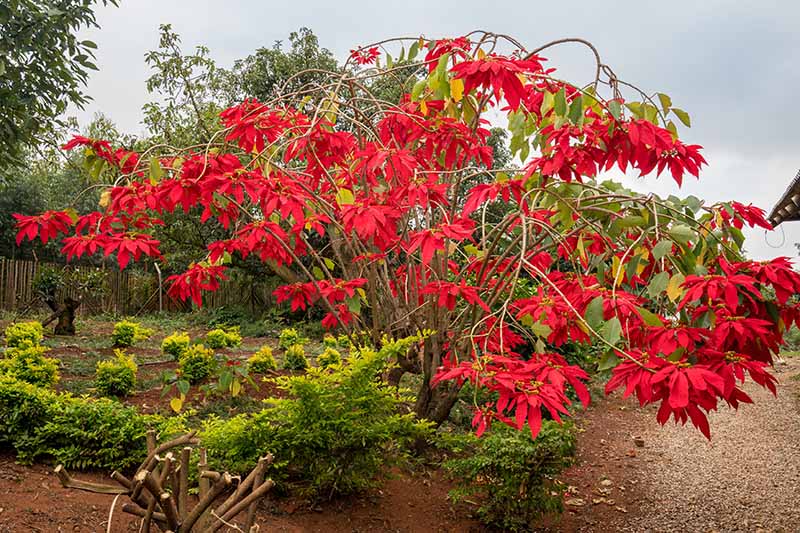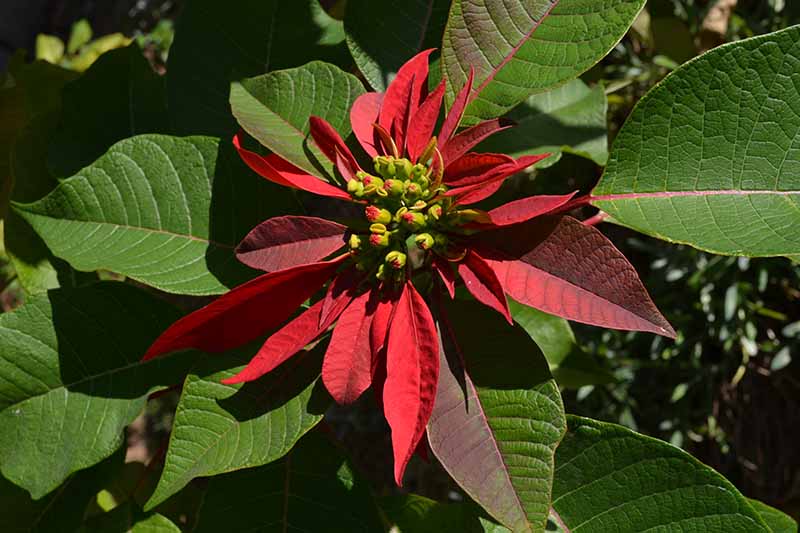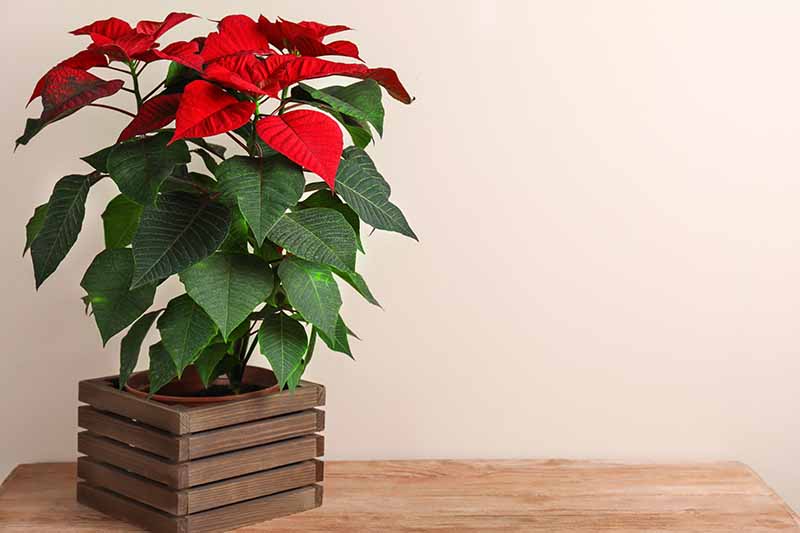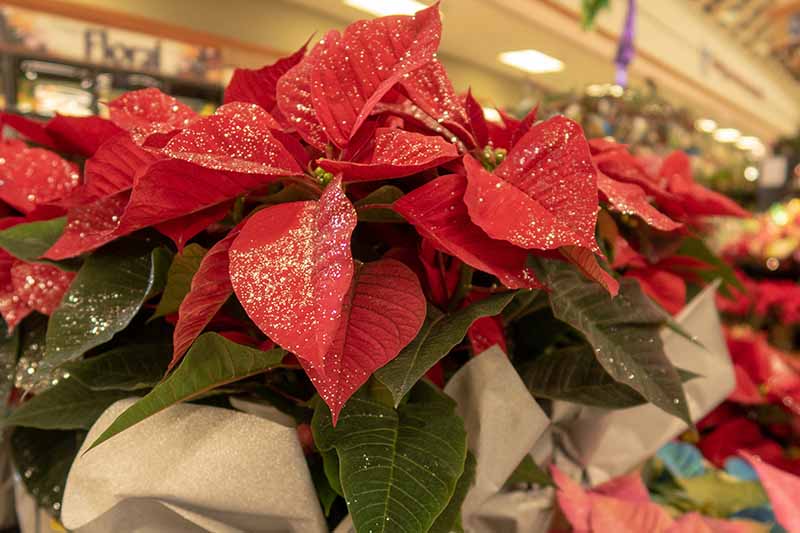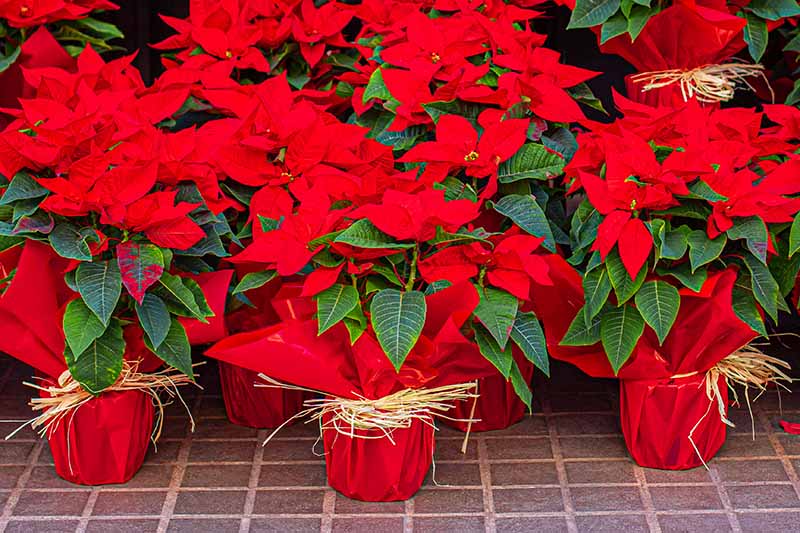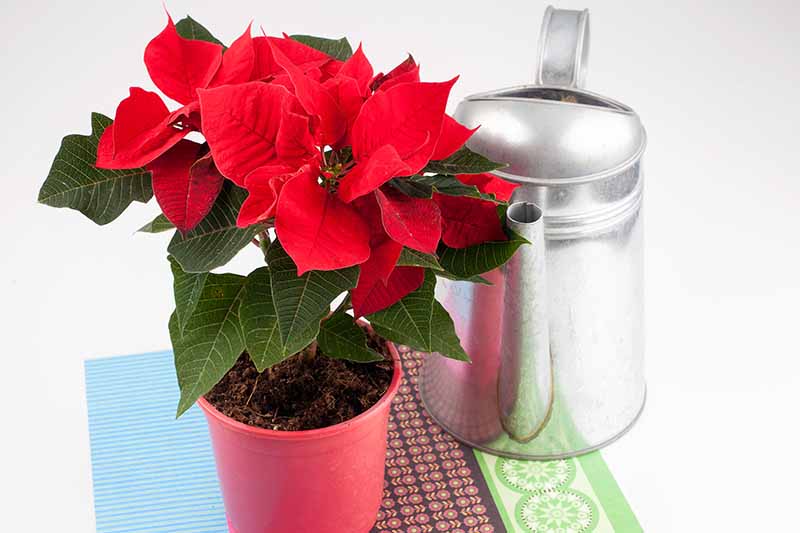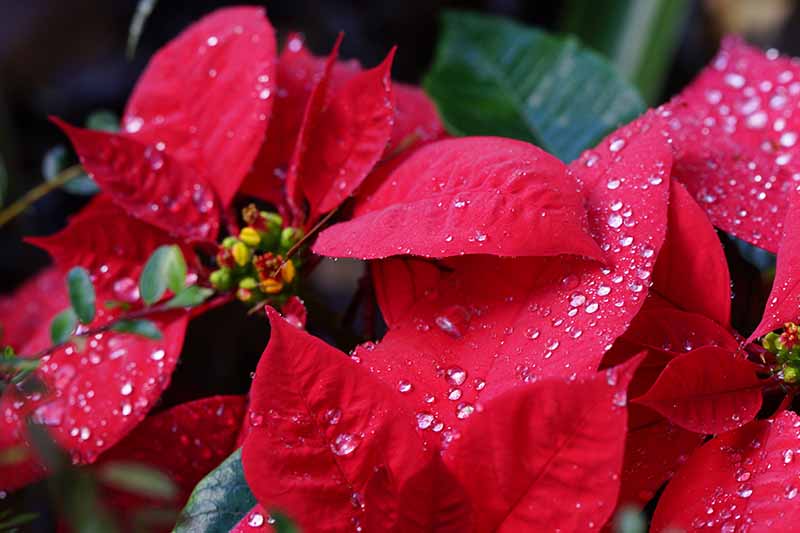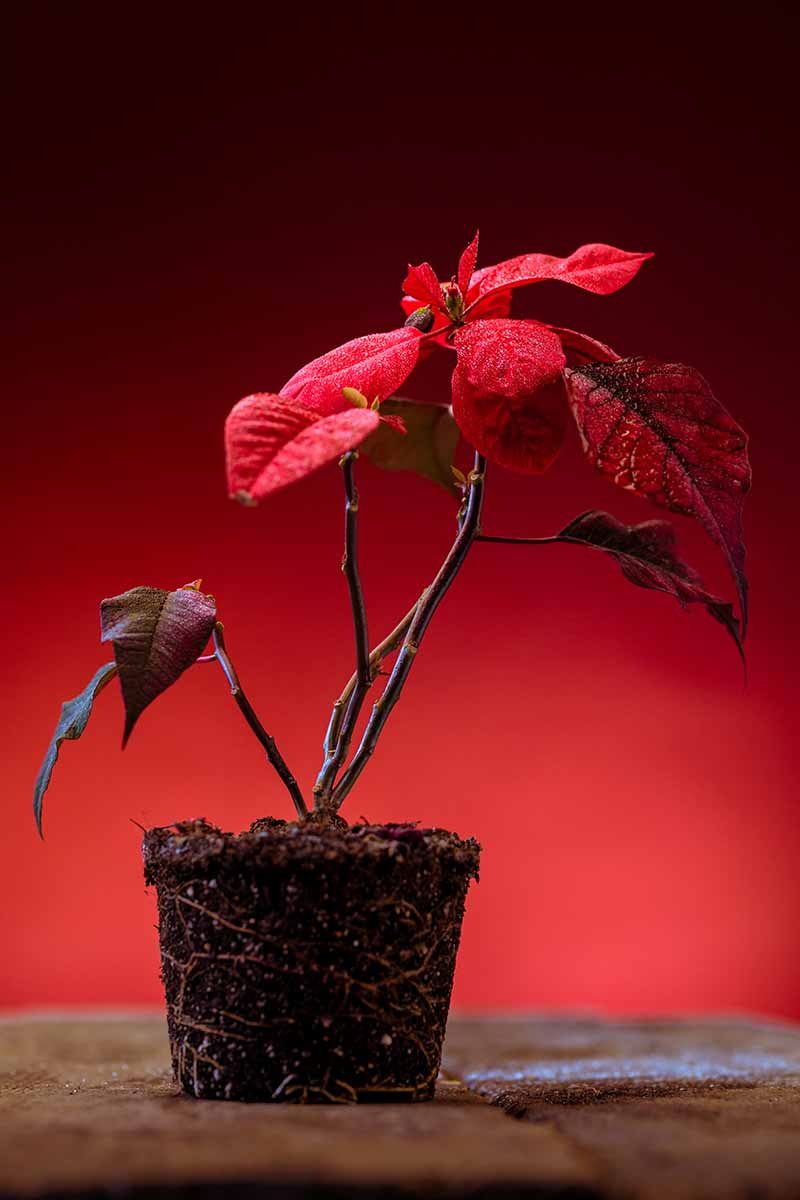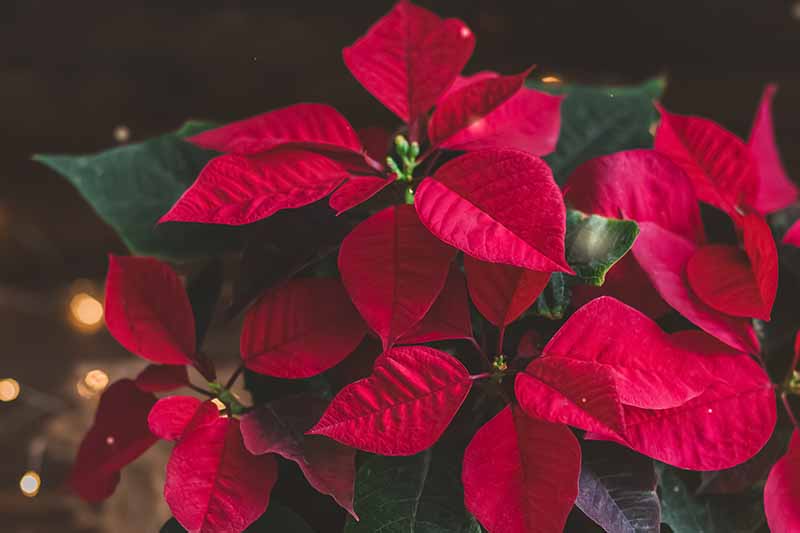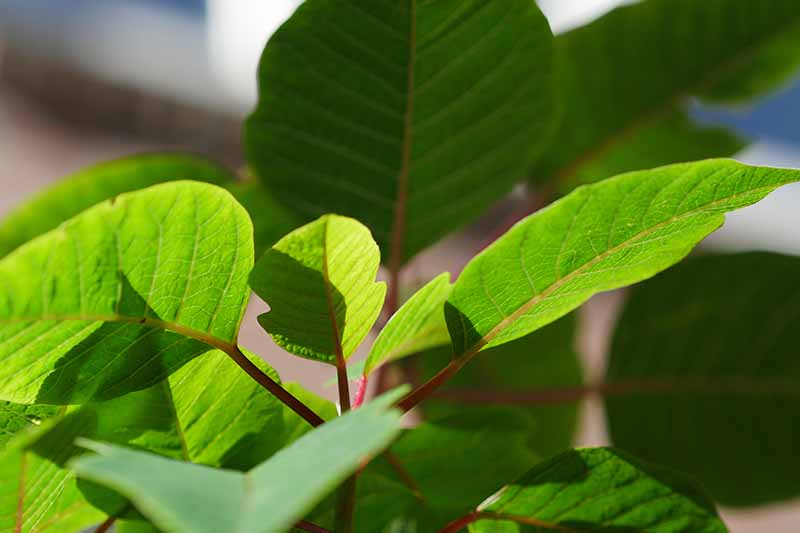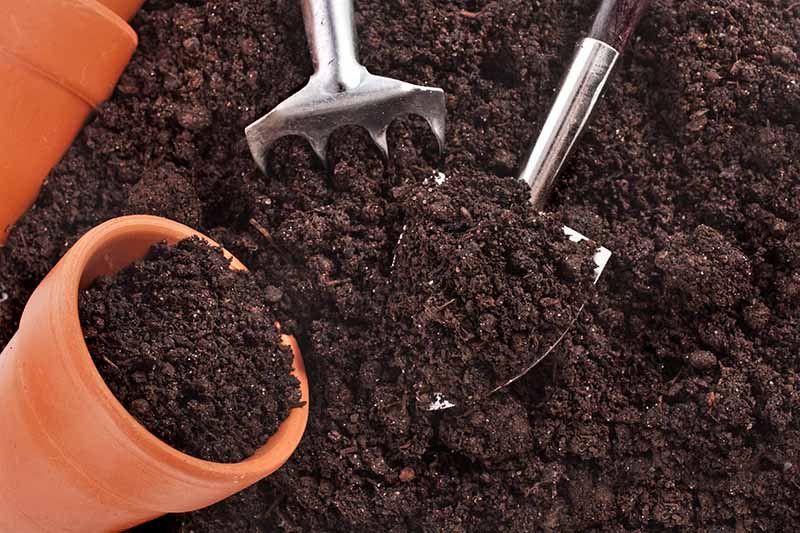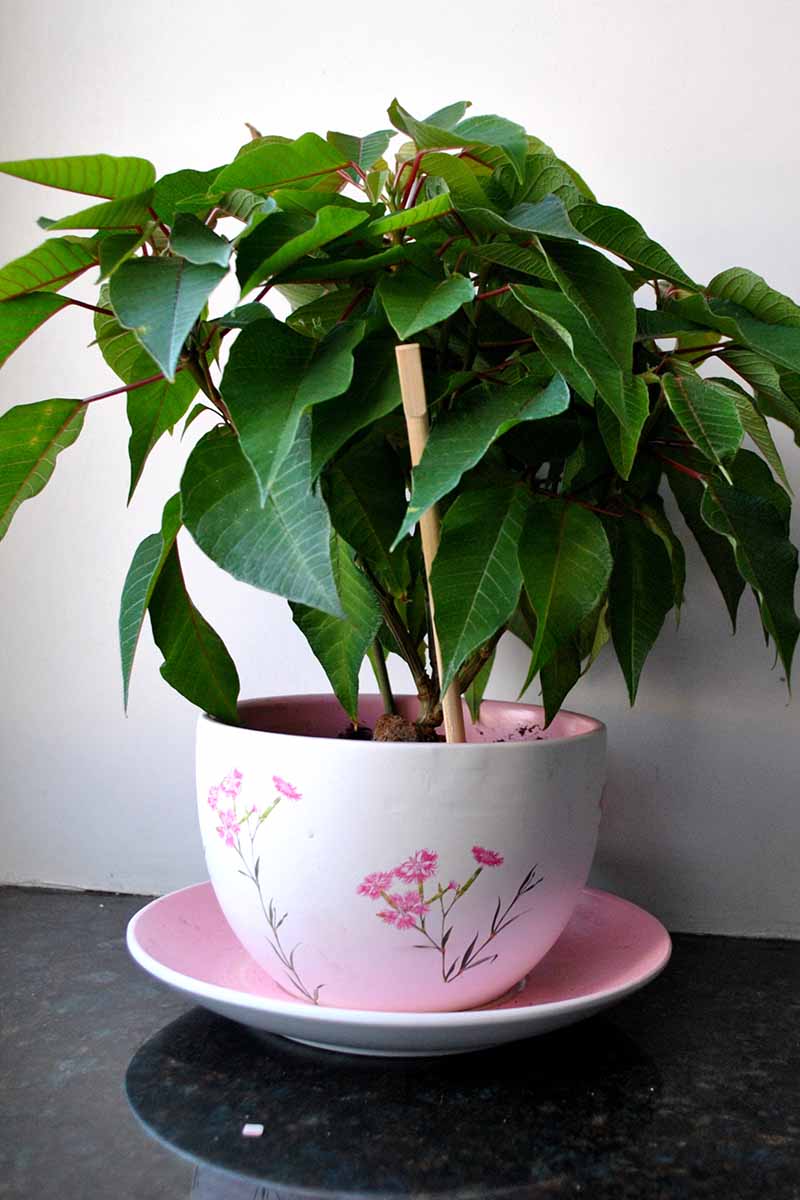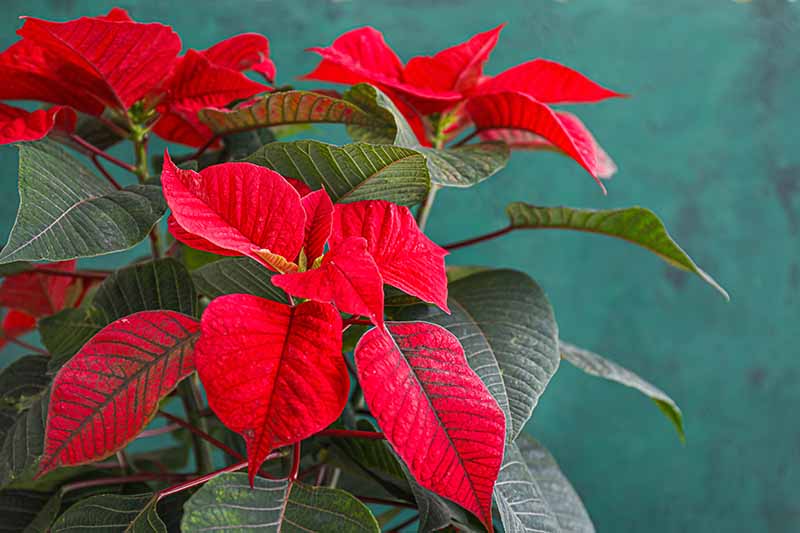Contrary to what you might think, these plants don’t naturally die after the holidays, but they do go through a cycle that we tend to misunderstand at first glance. After their brightly colored holiday show – produced by colorful modified leaves called bracts, rather than actual flowers – poinsettias go through a period of dormancy, which to us, makes them look dead or dying. We link to vendors to help you find relevant products. If you buy from one of our links, we may earn a commission. For those of us with cold winters, keeping poinsettias as houseplants is definitely an option, though you should be aware that bringing them back to their original color next year will take a little care – a project that will carry you through each season of the year.
Poinsettia Expectations Throughout the Seasons
In order to get that showy color in your poinsettias year after year, you’ll need to replicate their natural growing conditions. Poinsettias are native to dry forests in southern Mexico and northern Guatemala where they grow to be large shrubs or small trees. While these tropical forests are warm all year long and receive large amounts of rainfall and humidity, they go through long dry seasons as well. Translating these conditions for your home means that the plants like a fairly stable temperature, humid air, well-draining soil, and drier periods during their yearly cycle. Another thing you’ll need to know about poinsettias is that in their natural habitat, the shortening day lengths and longer nights are a cue for them to begin flowering. While their flowers are actually small, yellow, and barely noticeable, the bracts – modified leaves – around these flowers develop showy colors during this period.
If you want your poinsettia to produce colorful bracts year after year, you’ll need to replicate these long nights in your home. As you can see, poinsettias have rather particular seasonal expectations!
Winter Care
One of the most colorful houseplants there is, when a poinsettia comes into your life, it will no doubt already be flush with color and ready to adorn your home for the holidays.
Purchased poinsettias should maintain good color in their bracts for 2-3 months. According to a document by Mike Schnell, ornamentals and floriculture specialist at the Oklahoma State University Extension, recent improvements to many cultivars mean plants can often remain decorative from Thanksgiving until Valentine’s Day – or even through the end of March. Starting your poinsettia off with the right care as soon as you buy it or receive one as a gift is the first step in your yearlong regimen of keeping it healthy as a houseplant.
Choosing a Healthy Plant
If you’re planning to keep your poinsettia around after the holidays, you really need to start with a healthy plant. When choosing your poinsettia, look for specimens with the following characteristics:
Plants are not drooping or wilting Lush, dark green foliage Well-colored, fully-opened bracts without green on the edges – look for natural color, not plants that have been painted Flexible stems No leaves falling off or turning yellow Soil not waterlogged Flowers not producing much yellow pollen yet
Be aware that some suppliers sell poinsettias that have been spray painted or glitter bombed. If you want a burst of color from the bracts again next year, check that the color is natural – and not just dyed.
Creating the Right Environment
Before you even leave the garden center or grocery store, make sure your poinsettia has adequate protection from the cold. Double-bag it in paper grocery bags if you need to, in order to protect the foliage from damage. Take it home right away – don’t let it sit in your cold car while you run around town checking things off your to-do list. Once you get home, place your plant in a spot where it will receive at least 6 hours of bright, indirect sunlight during the day. If your poinsettia’s pot does not have drainage holes, either switch out the pot for one of a similar size with holes in it, or poke holes in the bottom of the existing pot if you can. If it came wrapped in foil or a plastic sleeve, it’s a good idea to remove all the wrapping around the plant. While these sleeves protect it from the elements on your way home, and they may add to the decorative appeal, they can have detrimental effects on the plant if left on for too long. According to an article by Michael Reid from the University of California, published in Plant Physiology, keeping the stems of the plant pressed up, as sleeves do, increases the poinsettia’s production of ethylene. The sleeve also holds the ethylene close to the plant, which causes premature aging of many ornamental plants.
So, cut off that sleeve as soon as you get your poinsettia home! According to S.E Newman, greenhouse crops specialist, and B.A Edmunds of the Colorado State University Extension, the ideal temperatures for this plant are a steady 67-70°F during the day and 60-62°F at night. Don’t expose poinsettias to temperatures below 55°F. Avoid keeping your plants in drafty locations or spots with fluctuating temperatures, such as near heating vents. Also avoid placing poinsettias on or close to appliances that heat up periodically, such as refrigerators.
Watering Requirements
Check your poinsettia every day and water with tepid water when the surface of the soil feels dry to the touch. Water thoroughly – you’ll know it’s enough when you see water running out of the drainage holes in the bottom of the pot.
Be careful not to let your poinsettia sit in excess water – keep an eye out for this, especially if the pot is sitting in a saucer, or in a decorative container. If you miss a watering and your plant wilts, water thoroughly, wait 5-10 minutes, and then water again. Do not let the pot sit in water, as doing so can cause the roots to rot.
To extend flowering time, the Royal Horticultural Society recommends misting your plant daily. This will provide the higher humidity it prefers. Do not fertilize while the plant is in bloom. Get more tips on watering poinsettias here.
Dormancy
At some point in January, you will probably notice that the green leaves have started to turn yellow and fall off. Contrary to how things look, your plant is not dying. It has finished blooming and is now moving into a resting phase, a period of dormancy that is part of its natural annual cycle. After about half of the poinsettia’s leaves have fallen off, you should gradually start to reduce watering frequency. Your goal is to allow the soil to dry out gradually in preparation for dormancy. The colorful bracts will be the last to fall off.
When the soil is completely dry, the plant is now in a dormant state. There are two schools of thought on what needs to happen in terms of care during dormancy. The folks at the NMSU Extension recommend storing plants in a dark location at a cool 50°F. Other extension offices say that keeping them in normal household conditions with indirect bright light during this period is just fine. I lean towards the latter group, since I tend to forget about things that are stored in dark locations!
In either case, water only often enough to prevent the stems from shriveling, approximately every two weeks. When the top inch of soil is dry, drench the pot until the water runs out of the holes in the bottom. If your poinsettias stay in flower until the end of March, as is sometimes the case, they may not experience a very long dormancy period before they start putting on their spring growth.
Spring Care
Spring is when your poinsettia will break its dormancy and come back to life. Your care during this period can help it grow and flourish by returning to a normal watering routine, repotting, fertilizing, and possibly cutting it back (and you can use those cuttings to start more poinsettia plants if you wish). In April or May, move your plant out of its cool, dark hibernation location and back into the warmth and light of your home. Give it a good watering so the soil is moist.
Regrowth
When you start to notice new growth, begin to water it as often as you did while it was in bloom – letting only the top inch of soil dry out between waterings.
If your plant seems somewhat root bound, now would be a good time to repot it. Make sure you only move your plant up one pot size and use potting soil that drains well. Both of these steps will help ensure that your poinsettias do not sit in waterlogged soil. Using a pot that is too big for your plant can result in the soil staying too moist around the roots between waterings.
You will want to begin fertilizing during this period too. Use a liquid, low nitrogen, high potassium fertilizer diluted to half strength, and fertilize every 3 weeks.
Maintaining a Compact Shape
If you want to give your plant a more compact shape, cut it back so that the stems are about 6 inches tall. This is not a necessary step to achieving colorful bracts, but it will prevent the plant from getting leggy. You may wish to wear gloves while cutting back your poinsettia – while the plant is not poisonous, some people may have a skin reaction to the white sap that is released when it is cut, or when leaves are removed.
Summer Care
Summer is the time when you get to let your poinsettia develop healthy green leaf growth. Let it grow actively during summer, watering and fertilizing regularly as you did in the spring.
Provide your plants with 4-5 hours of sunlight a day. If you put them outside for the summer, make sure they are in partial shade.
Pruning
In the wild, poinsettias grow into tall, leggy plants. In our homes, we are used to seeing them as more compact, bushy plants. This is achieved via a little artful pruning. If you want that bushy, more compact look, now’s the time to shape your plant.
When pruning your poinsettia, leave at least 2 fully expanded leaves on each shoot. Prune back above the top leaf using clean, sharp pruners or scissors. This will promote side branching and result in a bushier plant. And only prune through mid-August since beginning in early fall, your plant will start moving into bract-producing mode. Be aware that commercial growers often also use a temporary growth inhibitor to keep these plants from doing what they naturally do, which is to grow into small shrubs. So even with proper pruning, you may not achieve quite the same compact, bushy effect as what you will find with poinsettias bought from a professional grower.
Fall Care
In their natural environment, poinsettias set buds when day lengths get shorter in autumn. Since our homes contain artificial light, we have to go out of our way to provide them with the hours of darkness they require to produce colorful bracts.
Bring Back the Color
To bring that gorgeous, vibrant color back to your plant, your plant needs approximately 10 weeks of long, dark nights lasting 13-14 hours, and days with 6 hours of bright, indirect sunlight. To enjoy the colorful display in time for Christmas, you need to begin this period of darkness between mid-September and the start of October.
There are a couple of different ways you can offer this houseplant the blackout conditions it needs: You can cover your plant with a cardboard box or opaque container from about 5 p.m. and uncover it the next morning around 7 a.m. each day. Or, you can place the poinsettia in a room that you don’t use in the evenings, but where the plant will still be exposed to bright, indirect light during the day. Preferably, nighttime temperatures should be around 65°F. Like the Christmas cactus, the poinsettia is sensitive even to artificial light during this period, including the glow from streetlights through the windows, so be vigilant about creating a truly dark space. During this time, the bracts will start to develop color.
Keep up this routine to allow the plant to continue to develop its colorful bracts until about early December. Once the plant has large, colored leaves, you can return it to a cherished spot among your holiday decor, and normal lighting conditions. You’re now ready to enjoy the fresh, bright colors of your poinsettia, and take your plant through its yearly cycle once again! Be sure to read our complete poinsettia growing guide here for even more information.
Are you ready to try keeping your holiday poinsettia alive all year as a houseplant? Let us know what your plans are in the comments. And get more articles on caring for houseplants, right here:
How to Transplant Poinsettias Outside Suddenly Sansevieria: Snake Plant Growing Guide Ginger Houseplant Care Tips: How to Grow Ginger Indoors
© Ask the Experts, LLC. ALL RIGHTS RESERVED. See our TOS for more details. Originally published on December 24, 2019. [lastupdated]. Uncredited photos: Shutterstock. With additional writing and editing by Clare Groom and Allison Sidhu.


